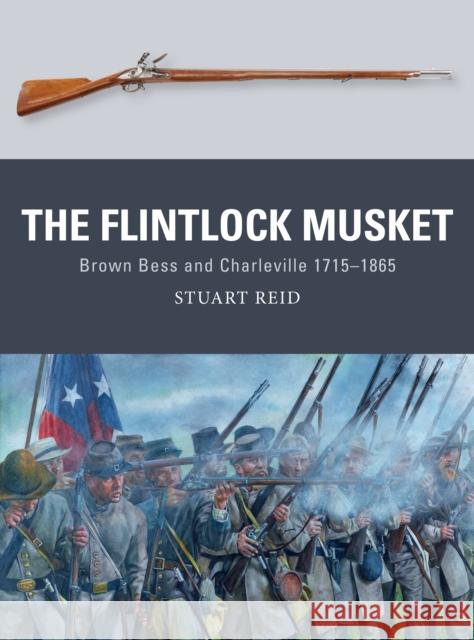The Flintlock Musket: Brown Bess and Charleville 1715-1865 » książka
The Flintlock Musket: Brown Bess and Charleville 1715-1865
ISBN-13: 9781472810953 / Angielski / Miękka / 2016 / 80 str.
The flintlock or firelock musket is one of the truly iconic weapons in history: first used on the battlefields of the Thirty Years' War and the English Civil War, it was carried by both sides at Bunker Hill, Waterloo and the Alamo, and can truly be said to have dominated warfare for more than 150 years, until the advent of cartridge ammunition and breechloading weapons in the 1840s and 1850s and were still being widely used as late as the American Civil War in the 1860s.During the 18th century flintlocks tended to follow one of two basic patterns: from 1722 the British .75-calibre model, the 'Brown Bess', offered better man-stopping qualities and influenced the Prussians and others, while from 1717 the lighter, handier but more sturdy French .69-calibre Charleville served as a pattern first for the other Bourbon kingdoms such as Spain, then the American Springfield family of weapons, and finally for just about everybody else in Europe during the Napoleonic era.Featuring specially commissioned full-colour artwork, this engaging study examines the role played by the flintlock in close-order combat on European and other battlefields, employing first-hand accounts to show how tactical doctrines were successfully developed to overcome the weapon's inherent limitations; it also explores the use of the flintlock musket by individuals in irregular warfare, chiefly in North America. These two threads are combined in an analysis of the weapon's lasting impact; notwithstanding its frequently negative portrayal in popular films and otherwise respectable histories, it was extremely effective and the first truly universal soldier's weapon.











